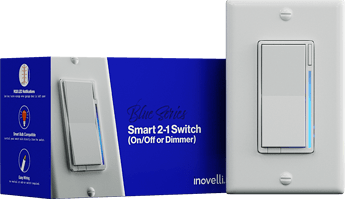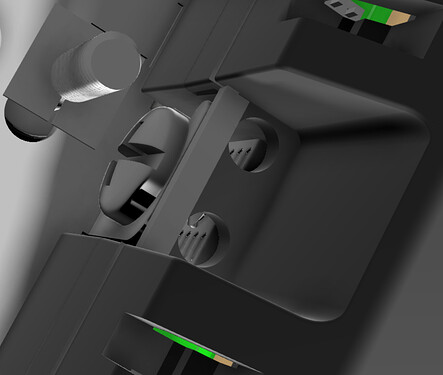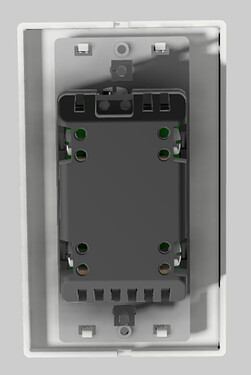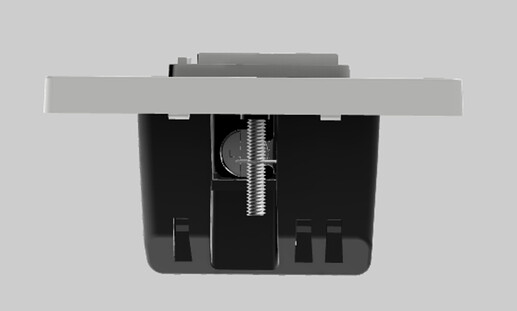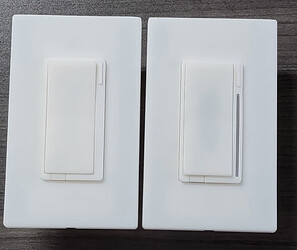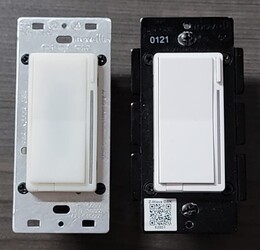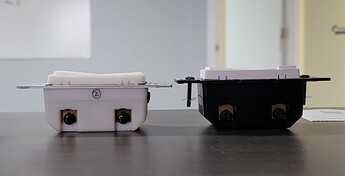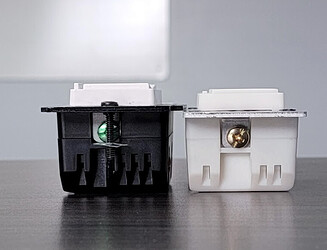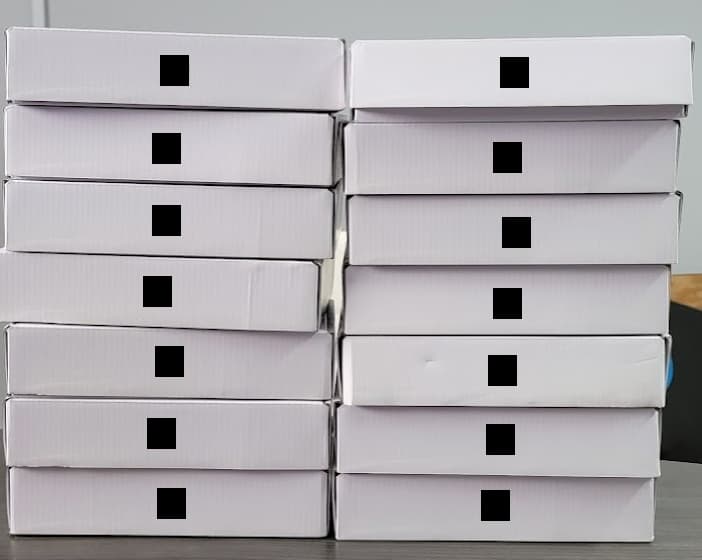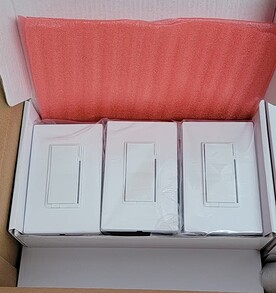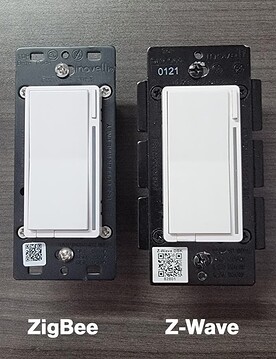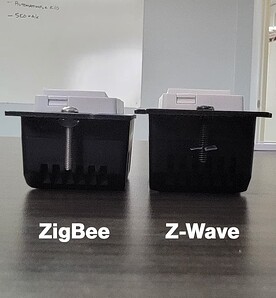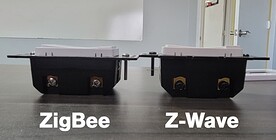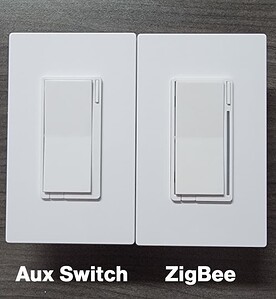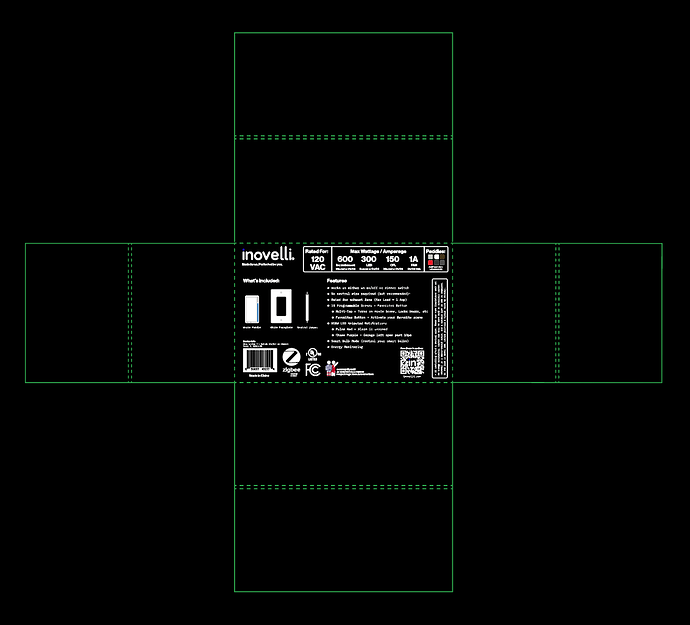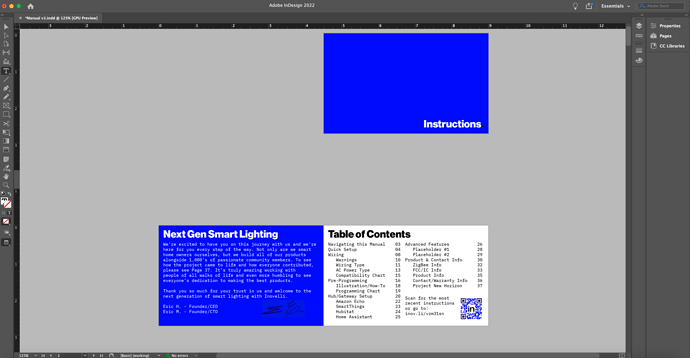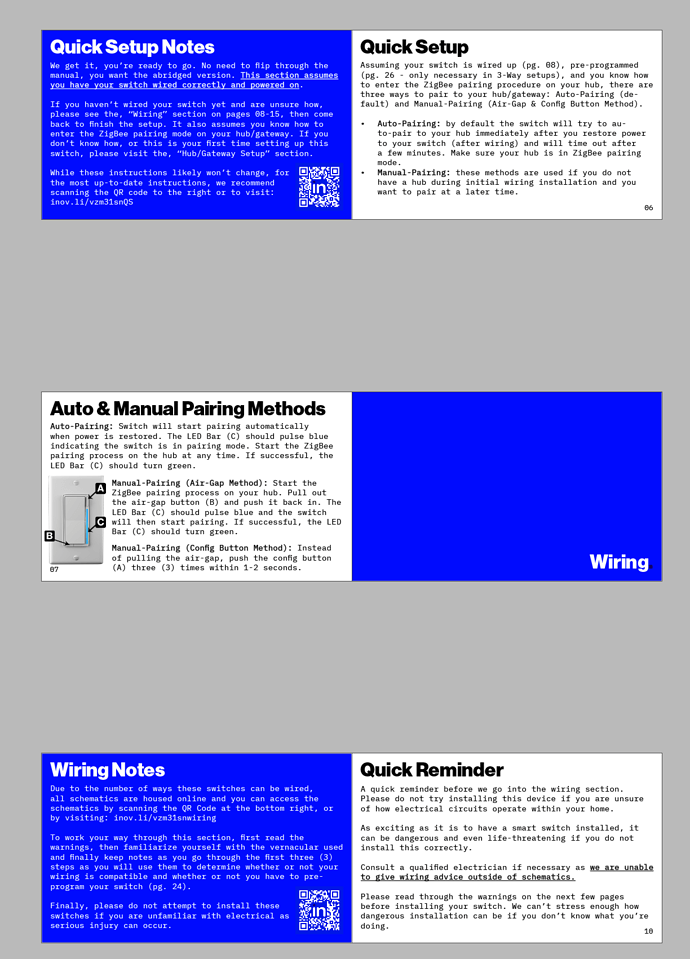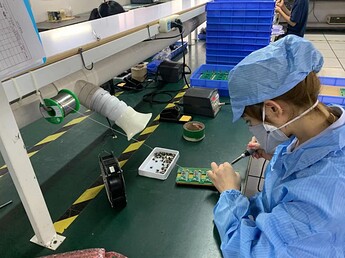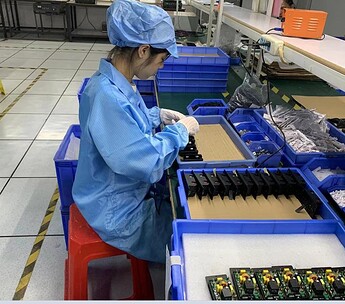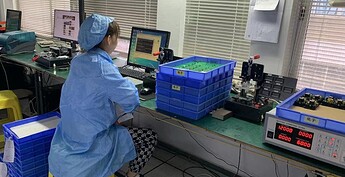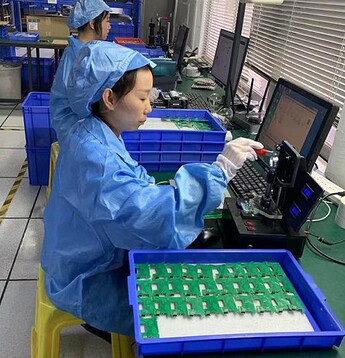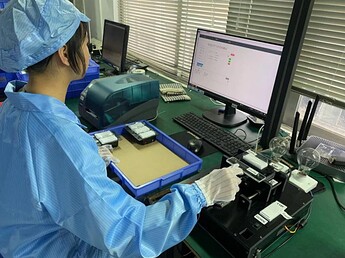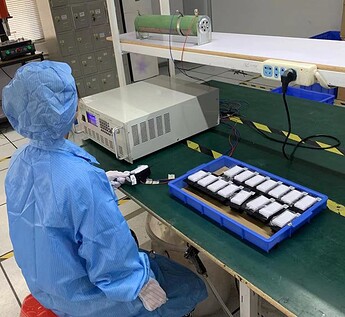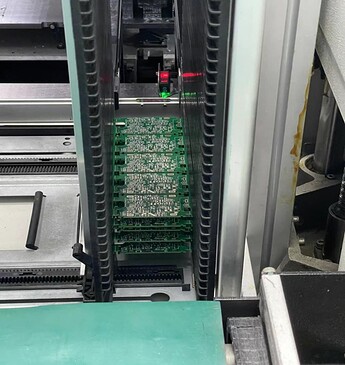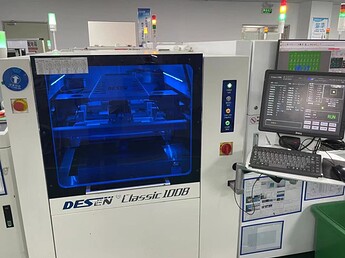A limited supply is available at Z-Wave Products who has decided to carry our Zigbee (and soon to be Z-Wave) lineup. They will be delivered in October with the first batch of switches.
Pre-Orders are now closed and anyone who purchased prior to September 10th will have their products delivered in Sept/Oct, whereas any purchases after will likely be delivered in December as we’ve sold through all the inventory we purchased (which, for the record was 5x what we normally order – unbelievable!)
Project Team
Feel free to tag any of us with questions. Myself (Eric H) & Darwyn are the go-to’s for overall project management and timeline questions, Eric M is the go-to for any firmware related questions and I’m (Eric H) the go-to for anything else. Either way, we’re all here to help!
- Project Manager (Inovelli): @Eric_Inovelli
- Project Manager (Manufacturer): @Darwyn_Inovelli
- Innovation Lead: @Eric_Inovelli
- Technical Lead: @EricM_Inovelli
Introduction
As per our tradition of working with you amazing people, here’s what this thread allows us to do as a community.
- Allows us to keep everyone updated on the project status (either good or bad)
- Allows you to participate and help us develop amazing products together
- Enjoy each other’s company and have fun talking home automation
How this initial post will be laid out is in five sections:
- Project Overview
- Initial Hardware & Software Requirements (edited to remain up-to-date)
- Timeline (edited to remain up-to-date)
- Pinned Ideas & Shout-outs (edited to remain up-to-date)
- Weekly Recap
Housekeeping
- DATES & FUNCTIONS ARE NOT SET IN STONE: Just a reminder that all dates and functions are sometimes fluid. We have to make choices based on feasibility, opportunity costs, and overall timeline. I will be as transparent as possible on these decisions, but just a heads up, they may not always be exciting.
- NO IDEA IS A BAD IDEA: Ok, some are, but honestly throw out anything that you can think of. If we use your idea, we’ll credit you and send you a free device, so take that shot!
- VERSION 1 VS VERSION 2: Some ideas may be fantastic, but may not make the cut for the first version of the product. Once the product is locked in from a function standpoint, we’ll keep a tally of V2 ideas and then once the product is produced, we’ll move the ideas over to a suggestions/wishlist section.
Ok, let’s get this party started!
Project Overview
The purpose of this project is to reach a new market. Traditionally, we’ve stayed in the Z-Wave space (and we will continue to do so) as that’s where we’re comfortable and where we’ve excelled. However, with the announcement of CHIP we made the decision to start developing in that space as well.
The Zigbee Alliance is spearheading the CHIP initiative and when the time comes to launch the CHIP project, certain products will have the ability to OTA the new protocol. In other words, some of the Zigbee switches you purchase now (ours included) will be using the same chip that the CHIP (too many chip references) protocol will use and you’ll be able to instantly OTA your firmware.
In addition, there has been a huge market for switches that work with smart bulbs and while our current Z-Wave switches have this ability already, they’re better suited for Z-Wave bulbs, which are a niche market (at this point in time, I think we’re the only ones who have plans to sell them). Whereas Philips Hue, the most popular and leader in lighting, runs off Zigbee.
We’re excited to start this journey and offer another option for people who aren’t quite ready for a full on hub and maybe are just starting to get their feet wet in home automation.
Project Name - New Horizon
“New Horizon” refers to us creating something that is new to us. As mentioned above, we’ve staked our existence in Z-Wave, but we’re ready to take on the adventure of a new (to us) protocol in Zigbee and a new (to the industry) protocol in CHIP.
New Horizon - Hardware Requirements
We will be using our current dimmer switch hardware with a few modifications. If you’re really interested in seeing what’s under the tent and how we kick off these projects, here’s the internal PRD (Project Request Document) that we presented.
Project New Horizon (2-1 Switch) - PRD_compressed.pdf (783.9 KB)
Hardware
Hardware - Dimmer Switch (Look / Feel)
- Responsive Paddle: rests in a neutral state (tap up = on // tap down = off & hold up = dim up // hold down = dim down)
- Config / Favorite Button: button should be used for configuration of the switch as well as scene control.
- Should be able to be held (for config)
- Should be able to be tapped (for scene control)
- RGB LED Bar: should measure the % of how much the switch is dimmed
- LED’s should be RGB (artificial white included)
- LED’s should also be able to be dimmed
- Colors: dimmer switch will be offered in white (matching Lutron Claro wallplates), but the paddle should be able to be replaced to change colors (almond, brown, red, black, grey, etc)
- Slim Design: depth of switch should be as slim as possible so that it can fit into metal boxes.
- Air Gap: UL requirement
- No heat-sink tabs: remove heat sink tabs for easier installation (note: may have to sacrifice max wattage)
Hardware - Features & Capabilities
- Zigbee 3.0: use the latest Zigbee chipset (should be the same one that will be used for CHIP and compatible with Philips Hue + Amazon Echo Plus)
- 3-Way / 4-Way Ready: should work in multiple different settings in a 3 & 4 Way setting
- Should work with an auxiliary switch (like GE’s does)
- Should work with an existing dumb switch
- Should work with another smart switch (if wired to another smart switch, it should be able to detect this)
- Power Monitoring: switch should measure the power consumption
- Zigbee Distance Estimator: should be able to estimate the signal strength of the Zigbee signal and notify via the LED bar
- Instant On: when tapped 1x (and scenes aren’t used), switch should turn the bulb on instantly (no delay)
- Configurable delay in 100ms increments (see tech doc)
- CFL & LED Compatibility: minimum buzz and flickering
- 600W: increase the wattage to 600 like GE’s
- Neutral & Non-Neutral Compatibility: switch should be able to work with a neutral wire or without a neutral wire
- Should auto-detect which setting it’s in (neutral/non-neutral, aux/dumb) and if it can’t, then there should be a manual override.
- Auto-Detect Line/Load (and if possible other terminals)
- No matter how customer wires it, the switch should be able to detect what’s wired/where.
- **
Auto-Detect Type of Load:** Switch should auto-detect if it’s installed on a dimmable load or an on/off load and adjust it’s relay accordingly- 05/28/21: Unfortunately this is not possible at this time. This will be set from the switch
- Auto-Detect Neutral/Non-Neutral: Switch should detect whether or not it’s connected to a neutral wire or not
New Horizon - Software Requirements
Below is what we came up with for the software requirements. A lot has been inspired from our Red Series Dimmer switch!
- Zigbee Scene Control: 15 scenes (if possible – not sure if Zigbee supports this yet)
- 14 Scenes via Tapping the Paddle up or down and holding/releasing
- 1 Scenes via Tapping the Config Button
- Aux switch compatibility: Should work with aux switches when scene control is triggered
- Notifications via RGB Bars: RGBW Bars should be able to change colors based on events set up by customer (ie: if window sensor is opened, RGBW bar changes to red)
- User can choose to sync the bars or have them show separate notifications
- RGB Bars Config: bar should be able to change colors and also dimmed to the customers favorite level
- Auto Timer: switch should have a timer that shuts the switch off after a certain amount of time
- Easy Config: switch should be able to be configured via the config/favorites button.
- There should be infinite customization via parameters in the firmware, but also set customizations for HUB’s that do not allow parameter changes (ie: Wink)
- Internal Relay Disable: internal relay should be able to be disabled locally and via Zigbee
- Set Min/Max Level: minimum dim level / maximum dim level
- Ramp Rate Configuration: ability to change how fast/slow light turns on
- Ramp rate & instant on/off separated
- Default Dim Level: ability to set the default dim level
- OTA Ready: ability to update firmware via OTA
- Associations switch should be able to be associated to other Zigbee devices
- Smart Bulb Mode: mimic our Red Series smart bulb implementation but for Zigbee
Timeline
Ah, everyone’s favorite part. When is this flippin thing going to be released? Great question – here’s the high-level of what happens leading up to the first release of the timeline:
- We present a PRD (Project Request Document) that has all of the above info in it (see above section for the pdf)
- R&D (manufacturer) analyzes the PRD and we go back and forth until we can align on 90% of the product
- Initial Timeline is released and remaining 10% of product features are added/cut along the way
Again, just want to throw this out there – I don’t have a crystal ball so I can’t predict things that come up along the way. Trust me when I say we’re trying our best to get things launched on time.
In addition, we are using a separate manufacturer for this project so there may be a learning curve. Nothing wrong with our current manufacturer, just this new one is more specialized in Zigbee.
Pre-Initial Timeline Milestones:
- Present PRD: Completed
- R&D Analyzation: Completed
- Initial Timeline Released: Completed
Timeline (Estimated)
The initial timeline will be shown below and will be updated bi-weekly (if needed).
- Final confirmation of the structure
- Estimated Completion Date: August 20, 2021
- Status: COMPLETED
- Plastic structure tooling cycle
- Estimated Completion Date: October 17, 2021
- Status: COMPLETED
- Metal structure tooling cycle
- Estimated Completion Date: September 15, 2021
- Status: COMPLETED
- PCBA prototype production
- Estimated Completion Date: September 17, 2021
- Status: COMPLETED
- Program development and testing
- Estimated Completion Date: September 22, 2021
- Status: COMPLETED
- Switch and gateway compatibility test
- Estimated Completion Date:
October 15, 2021January 31, 2022 - Status: COMPLETED
- Estimated Completion Date:
- Prototype production and testing (3D printing structure)
- Estimated Completion Date: September 15, 2021
- Status: COMPLETED
- Product certification ZIGBEE/FCC
- Estimated Completion Date:
November 30, 2021February 14, 2022February 28, 2022May 30, 2022 - Status: COMPLETED
- Estimated Completion Date:
- Product certification UL
- Estimated Completion Date:
March 28, 2022June 15, 2022
- Estimated Completion Date:
Beta Testing will begin likely in mid-October December.
Pinned Ideas & Shout-Outs
Here are the ideas from the community. We sincerely appreciate them, we love them, and we couldn’t create the products we do without them. So, thank you for your input and let’s continue to innovate together and change the home automation category for the better (NOTE: if an idea is crossed out, it’s not because it wasn’t valid, nor was it something we didn’t consider – we’ve discussed it internally or with the manufacturer and unfortunately it was not feasible).
Hardware
Software
- @fatherdoctor’s post here regarding scenes & 700ms delay behavior
| Step | Current State | New State |
|---|---|---|
| 1 | Press and hold switch up | Press and hold switch up |
| 2 | 700ms pause | Scene command for button pressed is sent |
| 3 | Scene command for button held is sent | 700ms pause |
| 4 | N/A | Scene command for button held is sent |
Weekly Recap
Every Wednesday evening or Thursday morning, we have a meeting with our manufacturer to go over the various projects (status, issues, timeline, etc) and below I’ll provide a recap as well as edit the sections above so we can all keep track. If you have any specific questions you’d like me to ask, feel free to tag me and let me know so I can ask them as well. The weekly cadence for updates will be Thursday mornings (or afternoons depending on when we have the meeting).
April 15, 2021: Sent over the PRD for analysis – we should have preliminary feedback on May 13th.
May 28, 2021: We’re moving forward with this design. Preliminary timelines have us in September/October timeframe. Tooling will begin the first week of June and will last 50 days, with the first engineering sample to be received at the end of June. But this switch has almost everything we could ask for (decreased depth by 5mm, no heat sink tabs and basically all features we’ve asked for)
@BuilderTroy – I think they nailed your ground-screw idea too:
Full CAD Viewer can be found here: Fusion
July 16, 2021: LET’S GOOOOOOOO! Final pricing has been confirmed and we’re off to the races. Apologies for the delay, and this happens every time with a new relationship, but as the manufacturer starts to learn what the switches actual capabilities are, the price seems to go up. So, we had to work over the last month or so to really analyze the costs and work together to bring them back to an acceptable price, while making sure both companies were happy with margins. It was painful, but we finally are in a good spot and agreed to pricing this morning. Even better news, is the manufacturer, in good faith that we’d agree, kept working on the PCBA design and is almost complete, with delivery of the final product still in Q4.
August 5, 2021: Tooling is approved and deposit was made. Updated pics below. Thanks to @fatherdoctor, @flipontheradio, @harjms, (and I swear there was someone else that really kicked it off in one of these threads, so apologies I searched for 30min to try to find you, but couldn’t) everyone in this thread for pushing us to rethink the design: Config button interfering with paddle operation
We’ve lowered the config button by about 30% so that it sits below most of the paddle. We will also override the config button if both the config and paddle are pressed simultaneously.
August 19, 2021: No real update other than we are on track. There is a bit of a disappointment with the Matter announcement being that it’s been delayed, but it’s ok, this switch was always meant to be Zigbee first, so we’re still pushing forward. There is also a discussion around the MG21 and MG24 chipset (the first production run will have the MG21, which is not OTA upgradable to Matter, which is disappointing – there will have to be a hotwire used). More on this in the discussion below.
September 2, 2021: No updates – everything is on track for end of Q4. We will be creating the webpage within the next couple of weeks and adding in the ability to sign up for updates. The only thing we talked about today was the ability to update from Zigbee to Matter. It sounds like it’s going to be very difficult with the MG21 and will likely need a special harness, but we’re working through different approaches.
October 14, 2021: Samples are being sent tomorrow (October 15th) and we should have a few by next week for review! Exciting news and it will be the first indication of how they stack up against our Z-Wave switches. We’ll also be receiving samples of the new aux switch, which is exciting. As far as a timeline, the manufacturer is still confident in hitting the end of the year timeline, but realistically, I would say these should be ready in mid-late January given that UL takes 6-8 weeks, beta testing hasn’t started and this is the first time creating a switch like this for both companies so there’s a learning curve.
October 22, 2021: Prototypes arrived yesterday and they look amazing ![]()
Some quick call-outs on new features in case you can’t tell from the pictures:
- Slimmer switch depth (not a whole lot, but still… count it!)
- Lower profile config button
- No heat sink tabs
Screwless faceplate(UPDATE: Dec. 8, 2021 - unfortunately we can’t accomplish this)
December 09, 2021: Beta units have arrived and we are moving forward with testing in the month of December! Switches are being sent to UL for certification now that tooling has been finalized.
January 05, 2022: Happy New Year! Beta testing is moving along really well and we’ve been very impressed with the initial pass at the firmware. Like, really impressed. I’d say that this initial firmware was equivalent to the 10th iteration of our Z-Wave firmware, so we’re very pleased and hope we can put a bow on firmware within the next month. We’re actively testing Home Assistant, Hubitat, SmartThings, Alexa and Hue. We’re running into a few roadblocks with Hue, but I’m confident we can work through them.
January 06, 2022: Slight setback in that UL said it will take longer than anticipated as they’re backed up from COVID, so it’s looking like UL may not be completed until mid-late March. Outside of that, everything else is on track!
January 14, 2022: Still trucking… no real updates here other than we’re working on the Philips Hue binding situation and tracking bugs/enhancements. We should have an updated firmware file on the 20th of January. In the meantime, we’re starting a hype video for the Blue Series. Very, very early mockup, but I do like where it’s headed. These guys always do a fantastic job.
V1 - Hype Video: f.io/zBRm-Lp9
Feb 25, 2022: Need to get better at updating up here vs in the thread, sorry! Anyway, we’re on v7 of our firmware iterations right now and things are moving along nicely. All the advanced features have been confirmed to work on all the main hubs (ST, Hubitat, Home Assistant) and right now we’re working on the individual addressability of the LED’s, which should be released in v8.
The official hype video has been released!
Next steps are waiting on UL to finish certification, waiting for Zigbee certification, FCC/IC certification. Then producing these bad boys! We’re targeting an April June release. It’s really exciting and coming together!
March 18, 2022: I need to get better at updating up at the top of the page in addition to the comment section. Anyway, we’re still waiting on UL to finalize things and unfortunately the timeline is severely pushed back and they are estimating a May 20th date. Ridiculous.
We have completed the firmware and are submitting it to the Zigbee/CS Alliance for certification. At least with the UL delay we have time to make sure the bugs are all worked out.
Packaging has been finalized (sorry for the bad quality – I didn’t want to upload the .ai file):
I’m finalizing the manual (both digital and hardcopy) hopefully in the next week or so.
March 23, 2022: Just a quick update regarding some design elements. We’ve finished the design for the back of the switch (I’m hoping to get the dual-colors, but we may only be able to do one):
We’ve also been finalizing both the digital manual as well as the hardcopy. Here’s some screenshots of the hardcopy – I really like how it’s turning out:
April 25, 2022: Final firmware is being tested, UL is still in progress and the expected release date is around mid-July now due to UL taking forever… ugh. Final stretch though, hang in there!
April 28, 2022: Zigbee bindings are insane… the team really perfected them and we have the community to thank for pushing us on speed and proper execution. Check out this video to see how the switch is controlling 13 Hue bulbs – it’s so fast that you’d think they were dumb bulbs connected to the switch:
July 08, 2022: UL has finally given us the green-light that everything has passed their certifications (still waiting on the official report, but this is enough to start production) and we are now waiting a production date and factory inspection. We should know an official date next week (week of the 11th) and I will keep everyone informed as I know more. Great news!
August 12, 2022: Received the first pictures from production!
September 9, 2022: Production has finished (2 days early!) and we are lining up the logistics to get it over to the US. Next steps once they’re here is to have them clear US Customs (pray for us…) and then deliver to the fulfillment center in NJ. My best guess (if all goes well) is a late Sept/early Oct delivery.

